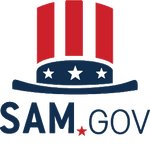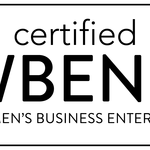Leadership development has recently become a strategic priority for countless organizations.
A recent Gartner study found that nearly 60% of human resources executives concentrate on cultivating leadership effectiveness, which is a number one priority. This aligns with widespread workplace trends demanding adaptable, empathetic, and lifelong-learning leadership styles.
So, having a clear leadership development plan is a must for motivated professionals seeking career growth and leadership roles.
TL;DR – How to Create a Leadership Development Plan
Creating an impactful leadership development plan involves:
- Assessing your talent and identifying high-potentials
- Gaining feedback from key stakeholders like senior leadership
- Determining the leadership style and competencies to focus on
- Designing developmental activities like stretch assignments
- Overcoming potential roadblocks like budget constraints
- Tracking metrics to measure the real-life impact of your efforts
We’ll dive deeper into each of these steps throughout the article.
Are you new to leadership? Or maybe you’re great at your job but find managing people tough? We get it. At Tandem Coaching, we offer a nine-month Leadership Development Program to help you grow as a leader.
Our program includes one-on-one coaching, 360 assessments, and group learning sessions. Whether you’re eyeing that executive role or just want to boost your people skills, we’re here to support your leadership journey.
Reach out to us at Tandem Coaching, and let’s start your leadership growth today.

What is a Leadership Development Plan?
A leadership development plan outlines the goals, resources, strategies, and timeframes to help employees cultivate vital leadership abilities. It acts as a roadmap to guide an individual’s journey to becoming an effective leader.
These personalized plans identify an employee’s strengths to leverage and weaknesses to improve. The defined action steps align with the organization’s needs so that the individual can contribute more value in their role.
In a survey of 1500 C-suite executives from LHH, a talent solutions provider, 89% of executives cited “agility and responding to constant change” as one of the top leadership challenges today. An adaptable, growth-oriented leadership plan allows companies to meet these demands.

Leadership Development Plan Examples
You and your coach will work together to design an action plan that helps you reach your goals. This plan will be tailored to your specific needs and aspirations.
To give you a sense of what this might look like, here are a few examples of elements you might include in your leadership development plan:
Example 1: New Manager Development Plan
Goal: Transition from individual contributor to effective team leader
Key Competencies:
- Communication skills
- Delegating tasks
- Giving constructive feedback
- Time management
Action Items:
- Complete the “New Manager Essentials” online course
- Shadow experienced manager for 2 weeks
- Practice delegation techniques with 3 direct reports
- Attend monthly peer mentoring sessions
Example 2: Executive Leadership Plan
Goal: Prepare for a C-suite role
Key Competencies:
- Strategic thinking and planning
- Change management
- Executive presence
- Financial acumen
Action Items:
- Enroll in executive MBA program
- Lead cross-functional strategic initiative
- Work with the executive coach on presence and communication
- Rotate through finance, operations, and marketing departments
Example 3: Emerging Leader Plan
Goal: Develop high-potential employees for future leadership roles
Key Competencies:
- Self-awareness
- Interpersonal effectiveness
- Problem-solving
- Innovation mindset
Action Items:
- Complete leadership style and strengths assessments
- Participate in the innovation task force
- Attend leadership conference
- Take on stretch assignment in another department
These examples illustrate how plans can be tailored to different career stages and goals. The key is creating a specific, actionable plan that matches your goals and your company’s needs.

Why is Leadership Development Important?
Investing in robust, customized leadership development benefits both individuals and organizations.
Here’s why it matters:
- Improved Organizational Performance: Strong leaders drive better business outcomes. Bersin by Deloitte found that organizations with excellent leadership development programs had 37% higher revenue per employee and a 9% increase in gross profit margin.
- Succession Planning: Developing a pipeline of future leaders ensures continuity and reduces risks associated with leadership transitions.
- Better Talent Retention: Growth opportunities retain ambitious, high-potential employees.
- Increased Employee Engagement: Good leaders inspire and motivate their teams. A Gallup study found that managers are responsible for 70% of the differences in employee engagement levels across teams.
- Enhanced Adaptability: Effective leaders help organizations adapt to changes. It’s crucial for long-term success.
- Innovation and Growth: Leaders who continuously develop their skills are better equipped to drive innovation and capitalize on new opportunities.
- Competitive Advantage: Organizations known for developing great leaders attract top talent and outperform their peers. A strong leadership bench is a crucial differentiator in the market.
A well-designed leadership development plan is the foundation for realizing these advantages.

How to Create a Leadership Development Plan in 7 Steps
Designing an impactful leadership development plan involves the following key phases:
1. Assess Current Leadership Skills and Competencies
Start by taking stock of your current leadership capabilities. This provides a baseline for improvement and helps identify critical areas for development.
Methods for assessment include:
- Self-reflection and journaling
- 360-degree feedback from peers, supervisors, and direct reports
- Formal leadership assessments like the Leadership Circle Profile (LCP)
- Review of past performance evaluations
Be honest about both strengths and weaknesses.
2. Define Leadership Goals and Desired Outcomes
Once you have a clear understanding of your starting point, define your goals. Set specific, measurable goals for your leadership development. These should align with both personal aspirations and organizational needs.
Example goals might include:
- Improve team productivity by 20% within 6 months
- Successfully lead a major change initiative in the next year
- Develop 3 high-potential employees for management roles
- Increase personal executive presence score from 6/10 to 8/10
Be ambitious but realistic in your goal-setting. The most effective goals are challenging yet achievable.
3. Identify Key Leadership Competencies to Develop
Based on your assessment and goals, determine which specific leadership competencies you need to strengthen. Focus on the skills and behaviors that will most impact your effectiveness as a leader.
Common leadership competencies include:
- Strategic thinking
- Emotional intelligence
- Communication
- Decision-making
- Coaching and developing others
- Change management
- Innovation
- Accountability
Prioritize 3-5 key competencies to work on. Trying to develop too many areas at once can be overwhelming and ineffective.
4. Choose Appropriate Development Activities and Resources
With target competencies identified, select learning activities and resources to build those skills. Use a mix of different development methods.
Options to consider:
- Formal training programs or workshops
- Online courses and webinars
- Books and articles on leadership topics
- Stretch assignments and special projects
- Job rotations or cross-functional experiences
- Conferences and networking events
- Self-directed learning and reflection
Choose activities that match your learning style and fit within your available time and budget. Quality matters more than quantity – focus on high-impact experiences.
5. Create an Action Plan with Timelines
It’s time to put it all together into a concrete action plan.
For each development activity, specify:
- What exactly you’ll do?
- When you’ll do it?
- How you’ll measure success?
Break larger goals into smaller milestones with specific deadlines.
Example action item:
- What: Complete the online course on “Coaching for High Performance”
- When: Finish 2 modules per month, complete full course within 4 months
- Measure: Pass the final assessment with an 80% or higher score
Build regular check-ins to review progress and adjust the plan as needed.
6. Implement the Plan and Track Progress
With your plan in place, it’s time for execution. Commit to following through on the activities and timelines you’ve set.
To stay on track:
- Block out dedicated time for development activities
- Find an accountability partner to check in with regularly
- Keep a leadership journal to reflect on your learnings
- Use a task management tool to organize action items
Track your progress consistently against the goals and metrics you’ve defined. Celebrate small wins along the way to maintain motivation.
7. Evaluate and Refine the Plan Regularly
Leadership development is an ongoing journey. Set aside time every 3-6 months to formally evaluate your progress and refine your plan.
During these reviews:
- Assess what’s working well and what isn’t
- Gather new feedback on your leadership effectiveness
- Update goals based on changing needs or circumstances
- Adjust development activities as needed
Be willing to pivot if certain approaches aren’t delivering results. The most successful plans evolve over time.
Are you an HR Director looking to implement these steps? Or maybe you’re a new executive or high-potential leader aiming for that next big role. We can help.
At Tandem Coaching, our Leadership Development Program is designed to grow leadership at all levels. We work with you to create plans that fit your company’s needs and individual goals.
Want to learn more? Let’s talk about your leadership development needs.

Challenges of Creating a Leadership Development Plan
Designing and executing an impactful leadership development plan has inherent challenges, including:
- Lack of Time: Leaders often struggle to prioritize development amidst daily responsibilities.
- Limited Resources: Budget constraints can restrict access to certain development opportunities.
- Unclear Expectations: Without well-defined goals, plans lack focus and direction.
- Resistance to Change: Some leaders may be uncomfortable confronting weaknesses or changing ingrained habits.
- Lack of Organizational Support: If leadership development isn’t valued culturally, individuals may lack the motivation to invest in it.
- Difficulty Measuring Impact: The ROI of leadership development can be challenging to quantify in the short term.
- Information Overload: With countless leadership theories and resources available, it’s easy to become overwhelmed.
- Balancing Short-Term and Long-Term Needs: Immediate business pressures often take precedence over long-term development.
How to Overcome These Challenges
While these challenges are real, they’re not impossible to overcome.
Here are strategies to tackle common obstacles:
- Prioritize Development: Block out dedicated time for learning activities. Treat them as non-negotiable appointments.
- Get Creative with Resources: Leverage free or low-cost options like books, podcasts, and internal development programs.
- Set SMART Goals: Ensure your desired outcomes are well formed – Specific, Measurable, Achievable, Relevant, and Time-bound (SMART) for clarity and focus.
- Start Small: Build confidence through incremental changes before tackling major transformations.
- Seek Executive Sponsorship: Secure buy-in from senior leadership to create a culture that values development.
- Define Success Metrics: Establish clear KPIs to track progress and demonstrate value.
- Find a Trusted Advisor: Work with Tandem Coaching for expert guidance and curated resources in your leadership journey.
- Integrate Learning into Daily Work: Look for on-the-job opportunities to practice new skills.
Remember, overcoming these challenges is part of the leadership development process itself. Persistence and adaptability are key.

Frequently Asked Questions (FAQs)
Let’s address some common questions about leadership development plans.
What Should be Included in a Leadership Development Plan?
An ideal leadership plan contains an individual’s goals, required competencies, developmental activities, accountability mechanisms, and progress evaluation procedures. It also outlines the organizational resources and stakeholders supporting the initiative.
For instance, our 9-month group leadership development programs incorporate personalized coaching, peer mastermind groups, and repeat 360-degree feedback assessments that measure progress towards tailored goals per leader.
What are the Four C’s of Leadership Development?
The Four C’s of Leadership Development are a popular model for thinking about key areas of focus:
- Competence: Developing the skills and knowledge needed to lead effectively.
- Character: Cultivating personal qualities like integrity, empathy, and resilience.
- Context: Understanding the organizational and industry environment.
- Communication: Enhancing the ability to inspire, influence, and connect with others.
A well-rounded leadership development strategy should address all four of these dimensions.
What is the Ideal Learning Strategy for Leadership Training?
We suggest a 70-20-10 blended learning model balancing formal training, experiential learning, and relationship-based coaching for optimal leadership development.
For example, an employee attends a 2-day offsite workshop on strategic planning (10%). They then conduct stakeholder interviews and shadow cross-functional leaders to enrich perspectives (20%).
Finally, the employee receives monthly coaching to reinforce new mindsets through situational application (70%).
Conclusion
Leadership development isn’t just about learning new skills—it’s about transforming how you think, act, and inspire others. A well-crafted plan is your roadmap to becoming the leader you aspire to be.
At Tandem Coaching, we specialize in nurturing leadership potential at all levels. Our 9-month Leadership Development Program is designed for seasoned executives and those new to leadership roles.
Our mastermind group sessions provide a collaborative learning environment where you can share insights and challenges with peers. Reach out to us today, and let’s discuss how we can help you become the leader you’ve always aspired to be.


















